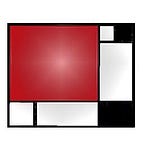CEO Porn: Data visualisation & Learning with Speed
I remain surprised at the impact a good data visualisation has on C level execs. It makes perfect sense; a good visualisation allows one to see key information — at a glance. They’re designs optimised for anyone who is both information hungry and time poor. A good description for any CEO. But the power of the impact continues to surprise me.
Does shaving seconds of information comprehension really justify the effect? Media organisations invest millions in good visualisation teams — for example, Thomson-Reuters earmarked 30m for data visualisation back in 2013, but when your only reason is internal reporting…perhaps a clunky interface is good enough?
The real benefits of good information design are not the extra seconds shaved in mentally accessing that data, but rather in comprehension that comes with speed.
Imagine you receive a dot on a piece of paper, posted in your letterbox, once a day for ten years. After ten years…all you get are a lot of pieces of paper. Now imagine those pieces of paper compiled into a flipbook, and as you flip it past fast with your thumb, you begin to see that the dot traces out an animated pattern. We learn patterns with speed.
When information is received in close proximity, our minds see patterns that they otherwise would miss.
Back when my company, Beautiful Data, was just starting out, I spent three days entering data from a pdf document of the Irish budget into a database. I genuinely cared about accuracy, and scanned back over the input data in tabular form regularly. All seemed well. But when we built the visual, suddenly data entry anomalies were immediately apparent. They were unmissable. The ‘visual broadband’ of the human mind detected these errors effortlessly.
Better error detection, and better trend spotting are benefits of well crafted visual information. But learning with speed is as true of personal learning as it is for creating behaviour change in others. Information distilled into a well crafted visual graphic has a remarkable persuasive impact, and this persuasive impact is largely to do with the rate at which information is absorbed. Easily absorbed, easily retained and easily reused when the recipient of your visuals communicates with others.
This could be in the form of a well crafted static graphic — to persuade a certain client, or an interactive interface that makes certain trends unavoidably clear (which in turn drives change throughout an organisation).
The most important part is the distillation of the vast amounts of data that most organisations warehouse. You can point to it and say “See? We should do something about this, now!”
To slightly misquote the mathematician Poincare:
“Understanding is built up with data, as a house is with stones. But a collection of data is no more an understanding than a heap of stones is a house”
Building a house well is done by spotting patterns, with ease and with speed. Moreover, modern techniques for doing this well are underutilised. Visual information designs have evolved just like technology has. They can provide an ease of understanding that makes one wonder how we ever existed in a world without it.
So, go forth and learn with speed!
Or go forth and follow our latest tool, a method of generating a focused twitter following — zenlikefocus.com. It saves time! (excuse the shameless, bottom of page plug :)
